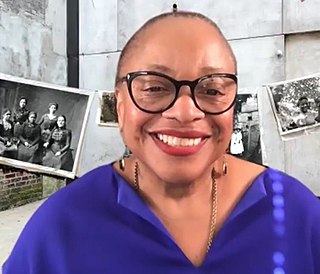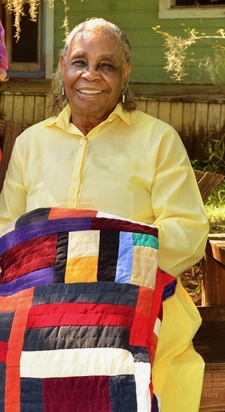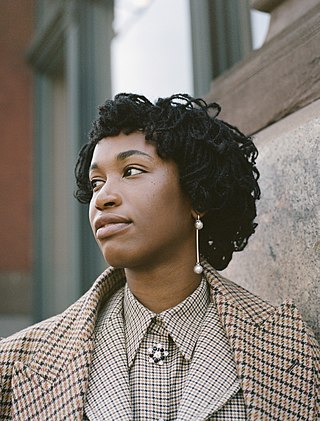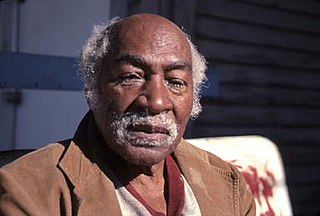Artistry


Through her quilts, Butler aims to "tell stories that may have been forgotten over time." [29] Butler often uses kente cloth and African wax printed fabrics in her quilts, so her subjects are "adorned with and made up of the cloth of our ancestor." [11] [12]
Butler's quilts both heavily incorporate African textiles a well as expand on a rich African American quilting tradition. [10] She explains in her artist statement: "African Americans have been quilting since we were brought to this country and needed to keep warm. Enslaved people were not given large pieces of fabric and had to make do with the scraps of cloth that were left after clothing wore out. From these scraps the African American quilt aesthetic came into being....My own pieces are reminiscent of this tradition, but I use African fabrics from my father's homeland of Ghana, batiks from Nigeria, and prints from South Africa." [12] She has also been inspired by the figurative textile works of Faith Ringgold. [24]
Butler typically works in bright jewel tones rather than representational colors to depict skin tone. [28] Color serves to convey the emotions of the individuals in her quilts rather than their actual complexions. [30] Using the Kool-Aid colors of the Black Power art movement also serves to capture the "soul and energy" of the person Butler is depicting. [31] While at Howard, Butler was mentored by members of AfriCOBRA. The artist collective's bright, colorful aesthetic and aim to create positive representations of Black Americans can be found in Butler's body of work, as well. [11]
Her quilts often feature portraits of famous figures in Black history, such as Paul Laurence Dunbar, Jackie Robinson, Frederick Douglass, and Josephine Baker. Butler uses a variety of patterned fabrics, which she carefully selects to reflect the subject's life, sometimes using clothing worn by the subject. Her portrait of Nina Simone, for example, is made of cotton, silk, velvet, and netting, whereas her portrait of Jean-Michel Basquiat is made of leather, cotton, and vintage denim. [14]
Along with her portraits of notable figures, Butler also creates pieces featuring everyday, unknown African American subjects that she bases on found photographs. [10] She describes her fascination for her nameless subjects' unknown stories: "I feel these people; I know these stories because I have grown up with them my whole life." [12] She strives "to bring as many of these unnamed peoples photos to the forefront" so "people will see these ordinary folks as deserving of a spotlight too." [25]
Her pieces are done in life scale in order "to invite the viewer to engage in dialogue--most figures look the viewers directly in their eyes." [12]
Her work, Harlem Hellfighters, was acquired by the Smithsonian American Art Museum as part of the Renwick Gallery's 50th Anniversary Campaign. [32] This work is Butler's largest quilt to date, measuring approximately 11 x 13 feet, and features nine life-sized figures. [31] The photograph Butler used for this work is a 1919 black and white photograph of the 369th Infantry Regiment, nicknamed the Harlem Hellfighters, from World War I. Butler says, "My work is to continue to lift them up in history so they can be seen in public spaces, where their heroic sacrifices become part of the American quest to fight against oppression and for freedom." [31]
In 2021, the Pérez Art Museum Miami acquired her work Black is King as part of the institution's new acquisitions initiative. [33] [34]









